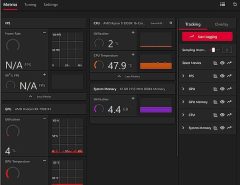Stunt driving captures the imagination like few other activities can. The shriek of tires, the rev of a high-powered engine, and the sight of a car flying through the air or drifting around a corner push the limits of machine and man. Stunt driving requires incredible skill, split-second timing, and nerves of steel. For those seeking the thrill of stunt driving without the inherent risks, stunt driving simulators offer an unparalleled experience. From professional stunt drivers looking to practice new skills to amateurs living out their Hollywood car chase fantasies, stunt simulator allow drivers of all levels to experience extreme driving in a safe, controlled environment.
An Introduction to Stunt Driving Simulators
Stunt driving simulators use cutting-edge technology to replicate the sensations of real stunt driving. Advanced physics engines and force feedback systems create an incredibly realistic experience that accurately simulates the performance of real stunt vehicles. High-fidelity graphics and sound effects heighten the immersion, making drivers feel like they’re truly behind the wheel of a souped-up stunt car.
Simulators feature a variety of stunt driving scenarios and courses, from wrecker’s yards and abandoned factories to race tracks and urban environments. Courses contain challenging elements like jumps, spins, high-speed drifts, two-wheel driving, and more. Some simulators even incorporate virtual reality for added realism. This variety tests drivers’ skills and provides an unparalleled adrenaline rush.
For professional stunt drivers, simulators offer a valuable training tool. They can practice dangerous new stunts or film-required sequences over and over in a safe environment. For amateurs, simulators give a glimpse into the skills it takes to handle a real movie stunt car. Most importantly, virtual stunt driving reduces the risks inherent to performing stunts in real cars, avoiding potentially serious or fatal accidents.
Key Features of Stunt Driving Simulators
The most advanced stunt driving simulators incorporate these important features to create an incredibly realistic experience:
High-Fidelity Graphics – With photorealistic detail, advanced lighting and shadows, and smooth high framerates, graphics are key to immersion in a simulator. The best systems use triple monitors or VR headsets to surround drivers in the virtual environment.
Physics Engine – The physics system models the performance of the car to mimic weight transfer, traction loss, crashes, and other aspects of stunt driving. Advanced physics adds to realism.
Force Feedback Steering – Force feedback applies forces to the steering wheel to simulate bumps, crashes, traction loss, and other sensations. This critical feature provides the feel of driving a real car.
Motion Platforms – Hydraulic motion platforms tilt and move the driving rig to simulate g-forces, jumps, bumps, and other impacts. This amplifies the experience tremendously.
Customizable Controls – From replica stunt car cockpits to standalone wheels, pedals, and shifters, extensive controls options improve immersion.
Surround Sound – Engines, crashes, skids, and environmental sounds in surround sound add to the realism through immersive audio.
Performance Recording – Built-in telemetry and recording allows drivers to analyze their performance, identify areas for improvement, and showcase skills.
Customizable Options – Adjustable settings for difficulty, vehicle performance, and other options allow drivers to customize the simulator to their skill level.
Multiplayer – Head-to-head multiplayer racing and drifting heightens the excitement. Some simulators even incorporate multiplayer with real stunt drivers competing together from different physical locations.
Who Uses Stunt Driving Simulators?
From Hollywood stunt crews to amateur driving enthusiasts, stunt simulators appeal to a wide range of users looking for an adrenaline-filled virtual driving experience:
Professional Stunt Drivers – For stunt performers in film and television, simulators provide an invaluable training tool. They can safely practice Hollywood-style car chase stunts and precision driving techniques required for different camera shots. This helps minimize risk and prevent accidents when transitioning skills to real-world driving.
Amateur Driving Enthusiasts – Even without professional training, simulator users can fulfill their “Fast and Furious” fantasies. The ability to drift, jump, race, and drive extreme vehicles in a safe virtual environment provides and unparalleled thrill for everyday drivers.
Racing Drivers – Racers use simulators to learn new tracks and practice techniques without having to rent out an entire course. Simulators save money compared to track time in real cars.
Video Game Enthusiasts – Gamers who enjoy fast-paced racing games get to experience those thrill virtually in a simulator. The real controls, graphics and sound create an experience far beyond playing with a console controller.
Car Customization Fans – The ability to modify virtual stunt vehicles with custom paint, body kits, wheels, and engine components appeals to car customization enthusiasts who want to experiment with different looks and performance upgrades.
TV/Film Producers – For movies and shows requiring stunt driving footage, producers can pre-visualize car chase sequences in the simulator before filming the live-action version. This saves time and money during filming.
Racing Teams – Professional racing crews utilize simulators to test setups and learn tracks without having to acquire expensive track time in real cars. This helps improve driver skills and team performance.
Driving Instructors – While most simulators focus on extreme stunt driving, some incorporate curriculums for basic car control skills like recovering from skids or improving high-speed cornering technique. These tools allow driving instructors to supplement on-track lessons.
Benefits of Using a Stunt Driving Simulator
From honing professional skills to living out Hollywood fantasies, stunt driving simulators offer many benefits that make them an exciting alternative to real-world stunt driving:
Safety – Virtual environments remove the risks of catastrophic crashes, rollovers or other dangerous accidents that can occur performing stunts in real cars. This allows drivers of all skill levels to push limits and experiment in a consequence-free setting.
Cost Savings – Simulator time costs a fraction compared to renting real stunt driving cars and courses. The ability to practice repeatedly saves money over conducting similar training with real vehicles where each session comes with a high price tag.
Convenience – Simulators can be accessed anytime without having to reserve limited spots at dedicated stunt courses. For professionals, training can happen on a film studio backlot versus traveling to a track.
Repeatability – Drivers can run the same scenarios over and over to hone skills and improve technique. Attempting the same dangerous stunts repeatedly in real cars carries substantial risk and cost.
Accessibility – While exotic stunt cars and tracks may be inaccessible to many, virtual simulators allow anyone to drive extreme car chase scenes. This brings the thrill of Hollywood-style stunt driving to everyday enthusiasts.
Entertainment – Simulators capture the thrill and excitement of extreme driving in a fun, entertaining experience. Drivers experience an adrenaline rush and the satisfaction of mastering maneuvers in a safe virtual environment.
Training – The ability to practice proper stunt driving skills lowers the learning curve compared to attempting difficult maneuvers for the first time in a real car. This allows drivers to build experience before transitioning to real-world stunts.
Customization – An extensive array of stunt cars, modifications, liveries, courses, and stunt scenarios keeps the experience fresh and exciting. Drivers can customize their virtual garage with exotic cars and modifications.
Drawbacks of Stunt Driving Simulators
While stunt simulators provide an incredibly realistic experience, some limitations exist. These drawbacks must be weighed when deciding between real and simulated driving:
Limited Physical Feedback – While force feedback steering and motion rigs simulate g-forces, they can’t fully replicate the actual physical sensations of real high-speed driving. The full noise, vibration and violence of crashes and impacts is difficult to simulate.
Loss of Adrenaline – Despite realistic graphics and sound, some of the life-or-death adrenaline that comes from real stunt driving is diminished in the virtual environment where crashes carry no consequence. Virtual danger can never fully replace real danger.
No Actual Risk – With no real risk of injury or death, some drivers feel simulators don’t capture the feeling of cheating death associated with successful stunts. The rewards of mastering skills may feel diminished without that mortal risk.
Upfront Cost – While cheaper over time, simulators themselves require an upfront investment ranging from a few thousand dollars for entry-level setups to over $100,000 for professional installations. Ongoing maintenance also accrues costs.
Motion Sickness – The visual movement combined with limited physical motion can induce nausea or headaches in some users, especially during long driving sessions. This discourages continued use.
Technical Issues – Like any complex software and hardware, glitches occur. Technical problems that interrupt or decrease realism hamper the driving experience and immersion.
Difficulty Transferring Skills – Developing skills in virtual environments doesn’t always directly translate to real-world proficiency. Transitioning from simulator to real driving requires further training.
Simulation Inaccuracies – Even advanced software can’t capture every nuance of real-world physics. Subtle inaccuracies in grip, weight transfer, crashes, and other factors may train unintended habits.
Leading Stunt Driving Simulator Hardware
From basic consumer setups to professional installations, stunt simulator hardware ranges from compact at-home configurations to full-scale hydraulic racing rigs:
Logitech G29 Driving Force – A popular force feedback wheel for home use on PCs or gaming consoles. Realistic road feel and quality FFB makes this an affordable starter option under $300.
Next Level Racing F-GT – For a more immersive home setup, the F-GT simulator cockpit offers an adjustable seating position, gearshift mount, and space for a wheel/pedal setup starting around $500.
SimXperience AccuForce Pro – Serious home users can invest $2,000 or more for a direct drive wheel like the AccuForce Pro that eliminates gears for extremely responsive, nuanced, and realistic force feedback.
Leo Bodnar, ProtoSimTech, Heusinkveld – To complete a high-fidelity home setup, brands like Leo Bodnar, ProtoSimTech and Heusinkveld offer pro-level pedal sets with hydraulic brakes and clutch systems for $1,000+.
Synthesis VR Motion Platform – For full immersion, hydraulic motion platforms by Synthesis VR start around $18,000, tilting and pitching users in sync with the simulator’s physics and graphics.
VAE Robotics Full Custom Rigs – At the professional level, boutique shops like VAE Robotics create complete custom simulator cockpits with triple screen or VR headsets, pro-grade controls, audio and seating integrated onto motion bases amounting to $75,000+.
Virage Simulation PROSIM4 – The Formula 1-derived Virage Simulation PROSIM4 platform is considered one of the most advanced professional racing simulators available at just under $200,000.
Top Sim Racing & Stunt Driving Software
The software side is just as critical as the hardware for creating an immersive, realistic stunt driving experience. Leading sim racing game engines provide some of the best physics models:
rFactor 2 – With advanced tire modeling, damage, and support for mods, rFactor 2 provides an incredibly realistic driving experience that caters well to drifting and stunt driving.
Assetto Corsa – Known for outstanding physics, Assetto Corsa models grip loss and weight transfer in a nuanced way perfect for simulating tail-happy stunt cars.
iRacing – While focused on circuit racing, iRacing’s meticulous vehicle dynamics can be applied to simulate stunt car physics. The multiplayer also connects users for head-to-head stunt battles.
BeamNG.drive – The soft-body physics of BeamNG.drive make it perfect for replicating crashes and other stunt driving chaos. Extensive mod support expands the included stunt-friendly vehicles.
Live For Speed – With rally cars and drift mods available, Live For Speed provides another popular sim racing platform well-suited to simulating Hollywood-style car stunts.
Custom Engine – For professional applications like movies, boutique software development firms can create custom stunt driving simulations with vehicle physics tailored specifically to replicate the real cars used on set.
Getting Started with Stunt Driving Simulation
For those intrigued by the thrill of simulated stunt driving, it’s easy to get started in this exciting hobby:
Determine Your Budget – Entry-level setups run a few hundred dollars while pro rigs cost $100,000 or more. Decide how much you want to invest as that shapes choices.
Pick Your Hardware – Select a standalone wheel or full cockpit setup. Look to leading brands like Logitech, Next Level Racing, and SimXperience for quality consumer-grade options.
Choose Software – Look to simulation engines like rFactor 2, Assetto Corsa, or BeamNG for great stunt driving physics. iRacing adds multiplayer options.
Model Your Dream Car – Many sims allow downloading fan-made vehicles. Install mods that replicate your dream street or movie stunt car like a classic Mustang or a Nissan Skyline.
Pick a Course – Look for stunt driving-focused tracks. Download mods that recreate Hollywood-style courses through warehouses and urban environments. Or create your own custom course.
Start Slow, Build Skills – Don’t jump right into big jumps and drifts. Master basics like throttle control, weight transfer, and recovering from slides first before moving onto advanced maneuvers.
Watch Tutorials – Study instructional stunt driving videos to learn techniques from real professionals. Apply tips on initiating drifts, linking drifts together, performing spins, and more.
Join a Community – Engage with other members through forums and groups. Share tips and bond over your passion for extreme virtual driving.
Tips for Mastering Stunt Driving Simulators
Approaching stunt simulation the right way ensures you build skills safely while maximizing enjoyment of the experience:
- Always start slow and walk before you run – don’t attempt dangerous maneuvers until you’ve mastered control of the car.
- Don’t exceed your comfort level – gradually increase the intensity rather than jumping into extreme scenarios that may overwhelm you.
- Adjust settings to match your skill – tweak options for damage, traction control, and AI driver aggression.
- Avoid overdriving – recognize when you’ve exceeded the limits of grip and back off rather than pushing too hard and spinning.
- Study proper technique – learn from tutorials to understand proper stunt driving maneuvers before trying to emulate them.
- Analyze your performance – use recording tools to identify areas for improvement after each session.
- Upgrade your hardware – invest in quality peripherals that improve immersion and control as your skills progress.
- Take breaks – walk away for a while if you start feeling sick, overly frustrated, or fatigued.
- Have fun – approach simulator driving as entertainment first and foremost. Don’t let competitiveness or a desire to improve eclipse enjoying the thrill!
The Future of Stunt Driving Simulation
As simulator technology continues advancing rapidly, virtual stunt driving will become even more realistic and accessible:
- More advanced VR headsets will provide greater immersion with higher resolution visuals and expanded fields of view.
- Improved motion simulation through more powerful hydraulics and advanced programming will intensify g-force feedback.
- Enhanced physics modeling will deepen realism through more accurate tire dynamics, damage modeling, aerodynamics, and environmental interactions.
- Artificial intelligence will enable simulated drivers and pedestrians to act realistically during stunt runs.
- New peripherals like custom helmets with integrated headphones and HUD displays will further enhance the stunt simulator experience.
- More car manufacturers may partner with simulator companies to produce official branded vehicles, tracks and stunt driving scenarios.
- Shared/public simulator installations at entertainment venues could make stunt driving more accessible to casual enthusiasts.
- Integration with professional race team and driver development programs will provide funding to advance simulator realism.
As technologies evolve, virtual driving will become nearly indistinguishable from real-world stunts. While no simulation can perfectly replicate the full experience and thrill of actual driving, rapidly improving simulator realism will unlock extreme stunt driving sensations for enthusiasts anywhere, anytime. Drivers can look forward to even more intense lifelike thrills as simulations continue accelerating toward the future.
Frequently Asked Questions
- Do you need racing experience to enjoy a stunt driving simulator?
No, simulators cater to all skill levels. Even without prior racing or stunt driving experience, the approachable physics and assist options allow novice users to quickly pick up stunt techniques. Advanced drivers can also disable aids and increase difficulty for a greater challenge.
- How dangerous are stunt simulators compared to real stunt driving?
Virtual stunt driving removes nearly all the catastrophic risks associated with real-world stunts. While motion sickness, eye strain or minor aches may occur, catastrophic injuries and death become almost impossible. This allows driving at the limit without mortal consequences.
- Can you earn a stunt driving license using only simulators?
Currently, most jurisdictions require actual closed-course driving to earn a specialty stunt driving license. While simulators help develop car control skills, demonstrating proficiency in real vehicles on a test track remains mandatory for licensing purposes due to regulation.
- Do professional stunt drivers use simulations to train?
Yes, many pro stunt performers utilize simulators in their training programs. Simulators allow safely practicing required techniques before having to perform them at high speeds in dangerous real-world conditions on set during filming.
- How accurate are stunt simulators compared to real driving?
With recent advancements, the best simulators replicate about 95% of real driving experience. While some subtleties of grip and weight transfer remain difficult to simulate perfectly, top-tier rigs provide remarkable realism that closely parallels actual driving.
Conclusion
Stunt driving simulators provide endless thrills for driving enthusiasts of all skill levels. Explore the exhilarating world of virtual challenges with games like struggle simulator: best choice, where the adrenaline rush of drifting, jumping, or mastering two-wheel driving in ultra high-performance cars mirrors the excitement of Hollywood-style stunt work, all without the associated mortal risk. These simulators offer an immersive experience that captures the thrill of daring feats, making them the perfect choice for those seeking the ultimate gaming adrenaline.
Tags: adrenaline-fueled, all levels of drivers, daredevil experience, driving simulation, driving skills, stunt challenges, stunt driving, stunt simulator, ultimate thrill, virtual stunt world







Leave a Reply